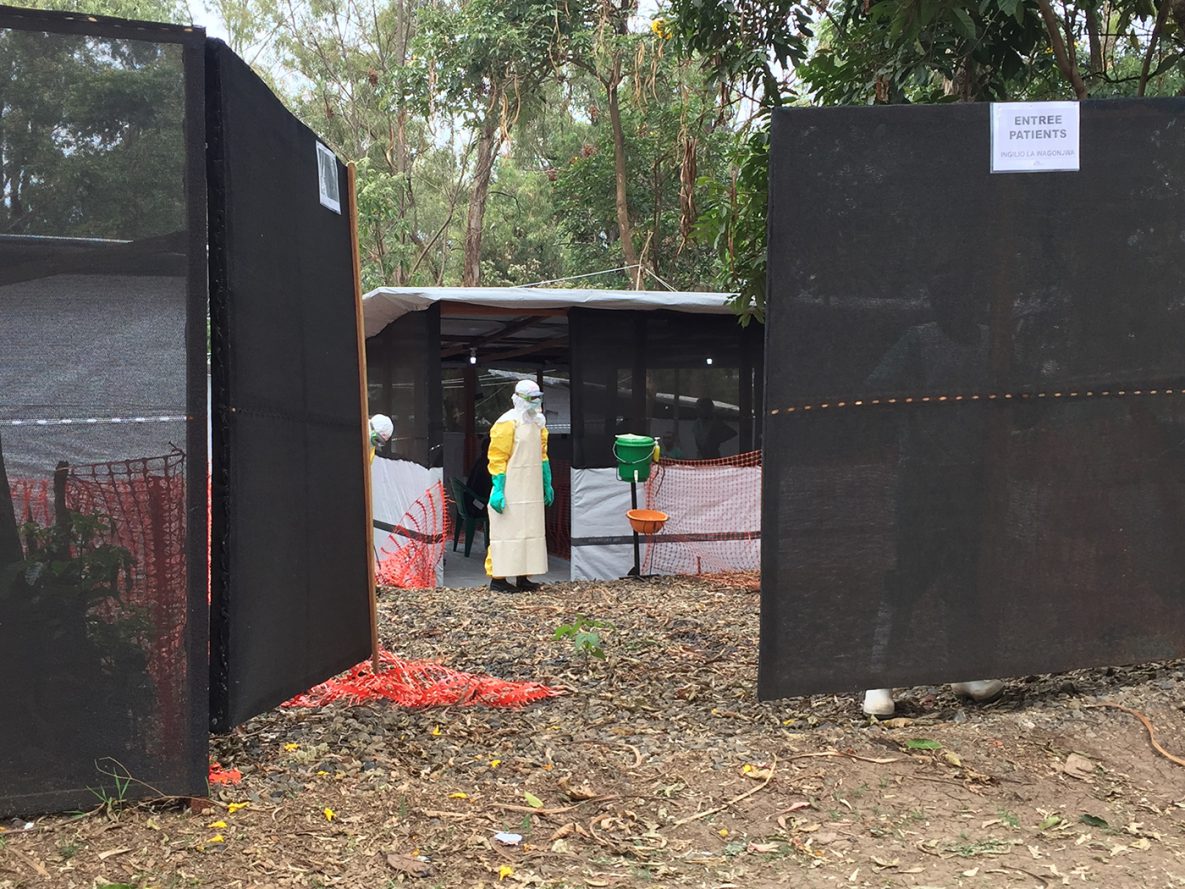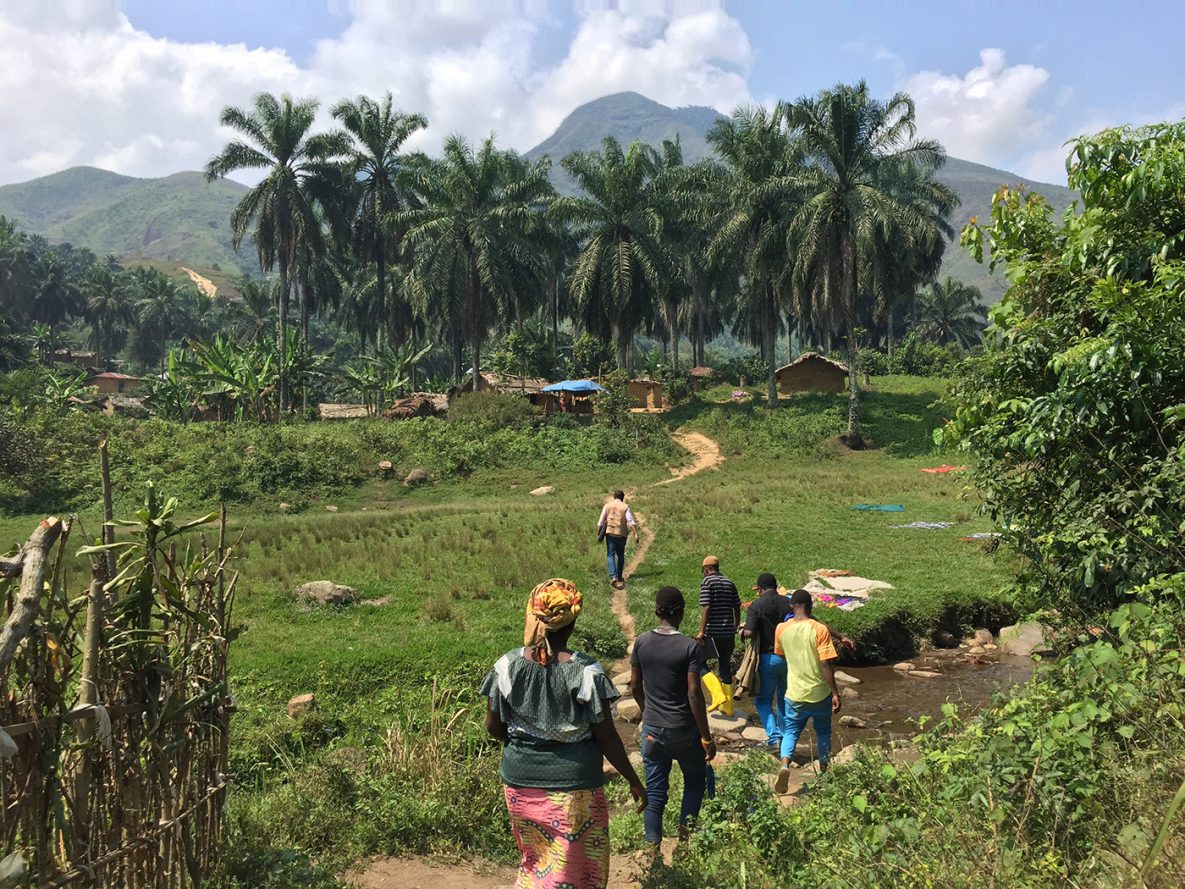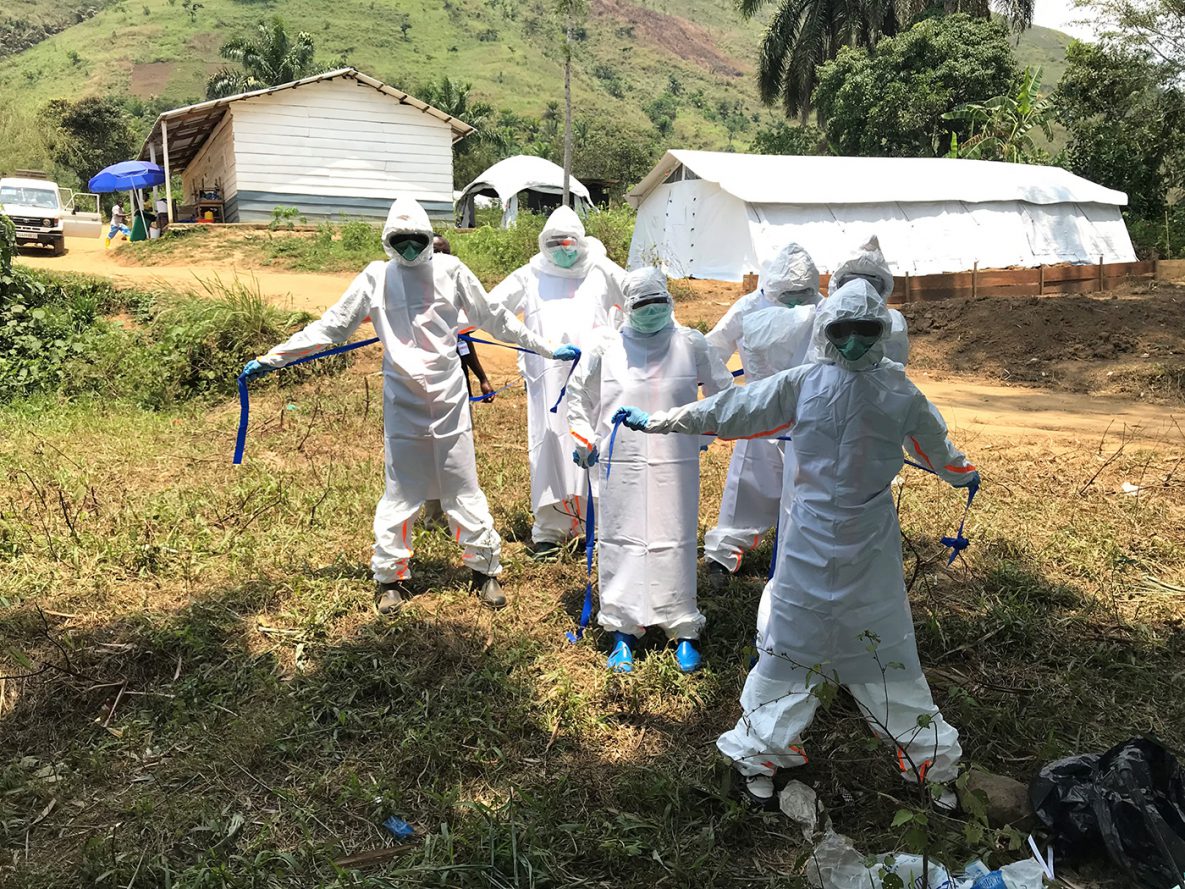Photos from the Field: The Ebola Response in the Democratic Republic of the Congo

A healthcare worker at the Ebola Transit Center in Bukavu, Democratic Republic of the Congo (DRC), awaits arrival of a person with a suspected case of Ebola. Photo Credits: Mary Claire Worrell/CDC

Aerial photo from the helicopter of the village of Chowe in the Province of South Kivu, the site of a cluster of Ebola cases in August 2019. Photo Credits: Mary Claire Worrell/CDC

A DRC Ministry of Health surveillance team works with local community healthcare workers to list and monitor all people who came into contact with Ebola cases in Chowe. The mountainous terrain created additional challenges for the teams, who visited every contact’s house daily to check on them and to give vital health information. Photo Credits: Mary Claire Worrell/CDC

A new set of Ebola cases in South Kivu posed additional challenges for responders due to the distance to an Ebola Treatment Center. The Local Health Center (Centre de santé de Chowe) was turned into a makeshift transit center until an Ebola Treatment Center could be built down the road. Pictured is a healthcare worker removing personal protective equipment (PPE) with supervision from a colleague using a hedge to mark the edge of the contaminated area—the hot zone. Photo Credits: Mary Claire Worrell/CDC

Epidemiologist Mary Claire Worrell deployed to Chowe in South Kivu via helicopter the day after the first Ebola case in South Kivu, DRC, was confirmed. She joined the team to help establish the Ebola response in the village of Chowe. Photo Credits: Mary Claire Worrell/CDC

Local health care workers are trained in proper equipping and removal procedures, known as donning and doffing, of personal protective equipment (PPE). Off-camera, a group of amused children watched the healthcare workers. Completing this training in the middle of the village helped to demystify PPE and the people wearing the it . Photo Credits: Mary Claire Worrell/CDC